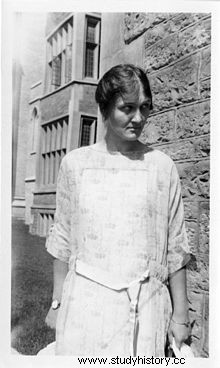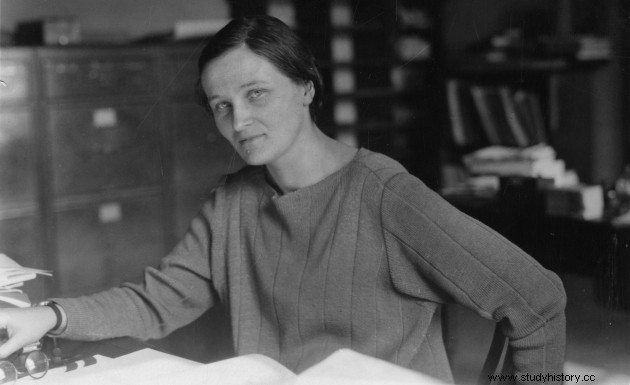Cecilia Payne-Gaposchkin (1900 – 1979), British-American astronomer, is known to have been one of the first astronomers to maintain that the stars are mainly composed of hydrogen. She is also the first female head of the astronomy department at Harvard.
The solar eclipse of May 29, 1919
 Cecilia Helena Payne was born in Wendover (England) on May 10, 1900. Daughter of Emma Pertz, painter, and of Edward John Payne, lawyer and historian, she is the eldest of three children. Edward dies when Cecilia is only four years old, and Emma has to take care of her family alone.
Cecilia Helena Payne was born in Wendover (England) on May 10, 1900. Daughter of Emma Pertz, painter, and of Edward John Payne, lawyer and historian, she is the eldest of three children. Edward dies when Cecilia is only four years old, and Emma has to take care of her family alone.
Cecilia first studied at St Paul's Girls' School. Her mother preferred to bet on the studies of her two sons, but the young girl won a scholarship in natural sciences at Newnham College at the University of Cambridge in 1919; there she learned botany, physics and chemistry. There she attends a lecture by Arthur Eddington about his expedition to the Gulf of Guinea to photograph a solar eclipse; this conference is then a revelation and Cecilia decides to work in astronomy.
The composition of stars
Cecilia Payne completes her studies but does not obtain a diploma; the University of Cambridge does not issue degrees to women. Realizing that her career options in England were limited, she met Harlow Shapley, director of the Harvard University Observatory, and went to work for him in the United States in 1923. Under his guidance, she embarked on a doctorate and works on the temperature of stars. His work led him to establish that, while stars have a composition of heavy elements similar to Earth, they are mainly composed of hydrogen, which goes against the ideas of the time. In 1924, she wrote an article to this effect and had it reviewed by astronomer Henry Russell, Harlow Shapley's former teacher. Not convinced, the latter dissuades her from publishing her discovery. However, he changed his mind and published an article on the subject himself, four years later.
In 1925, Cecilia brilliantly obtained her doctorate and embarked on the study of high luminosity stars, the structure of the Milky Way and variable stars. Due to her gender, however, her career advancement remains complicated.
Member of the American Academy of Arts and Sciences
 In 1931, Cecilia Payne became an American citizen. In 1933, in Germany, she met the Russian astrophysicist Sergei I. Gaposchkin. She then helps him obtain a visa for the United States; they married in March 1934 and had three children, Edward, Katherine and Peter. Cecilia did not stop her career, however, teaching, continuing her work and receiving various honorary distinctions:in 1936, she became a member of the American Philosophical Society, in 1943 of the American Academy of Arts and Sciences.
In 1931, Cecilia Payne became an American citizen. In 1933, in Germany, she met the Russian astrophysicist Sergei I. Gaposchkin. She then helps him obtain a visa for the United States; they married in March 1934 and had three children, Edward, Katherine and Peter. Cecilia did not stop her career, however, teaching, continuing her work and receiving various honorary distinctions:in 1936, she became a member of the American Philosophical Society, in 1943 of the American Academy of Arts and Sciences.
Cecilia Payne-Gaposchkin died of lung cancer in 1979. An asteroid has been named in his honor.
